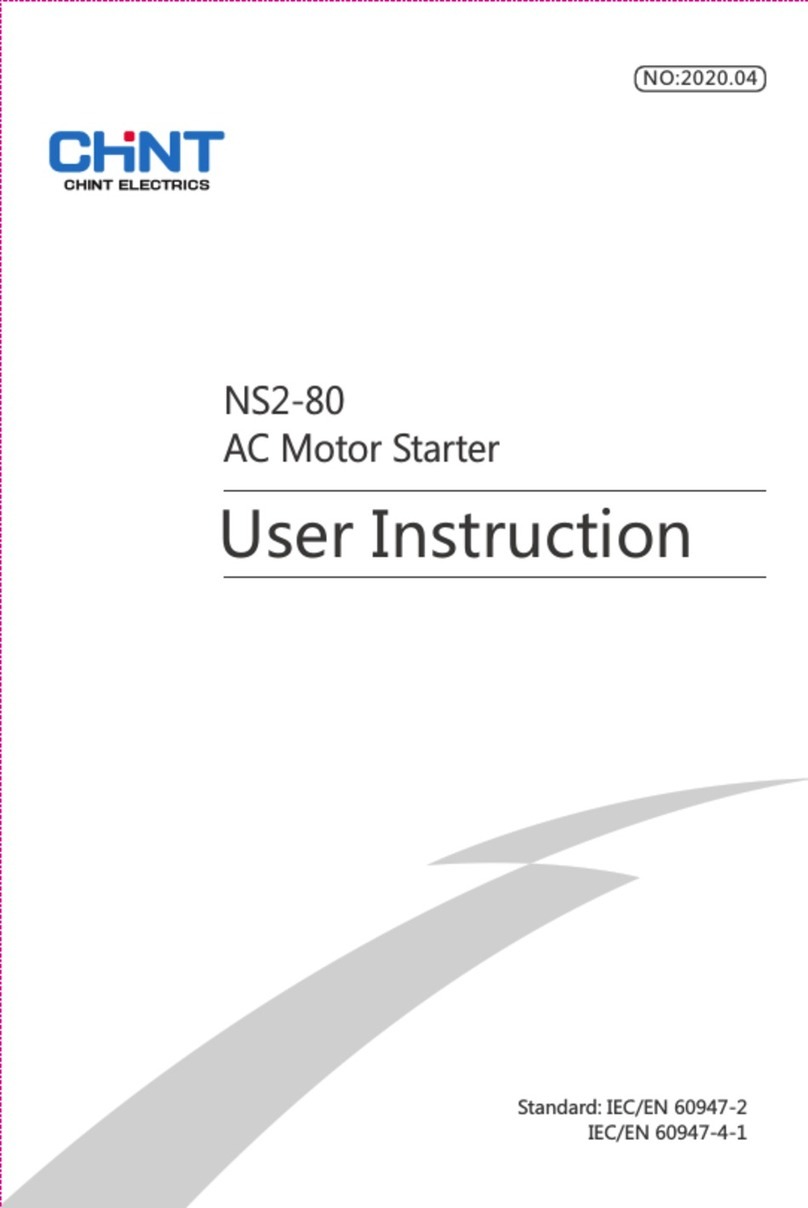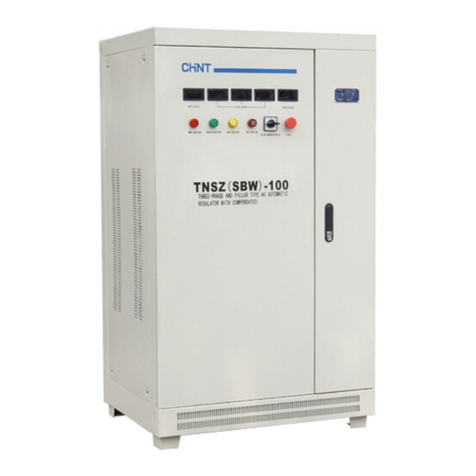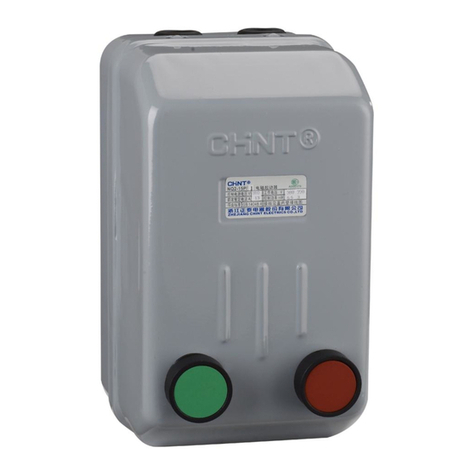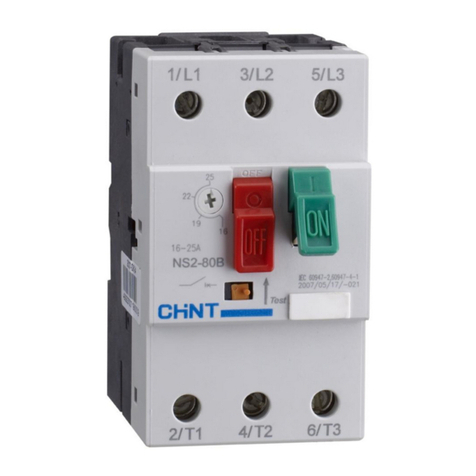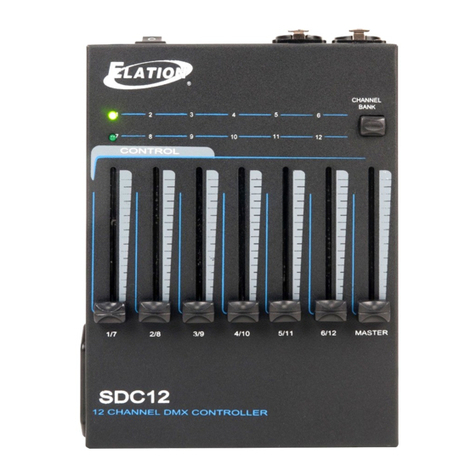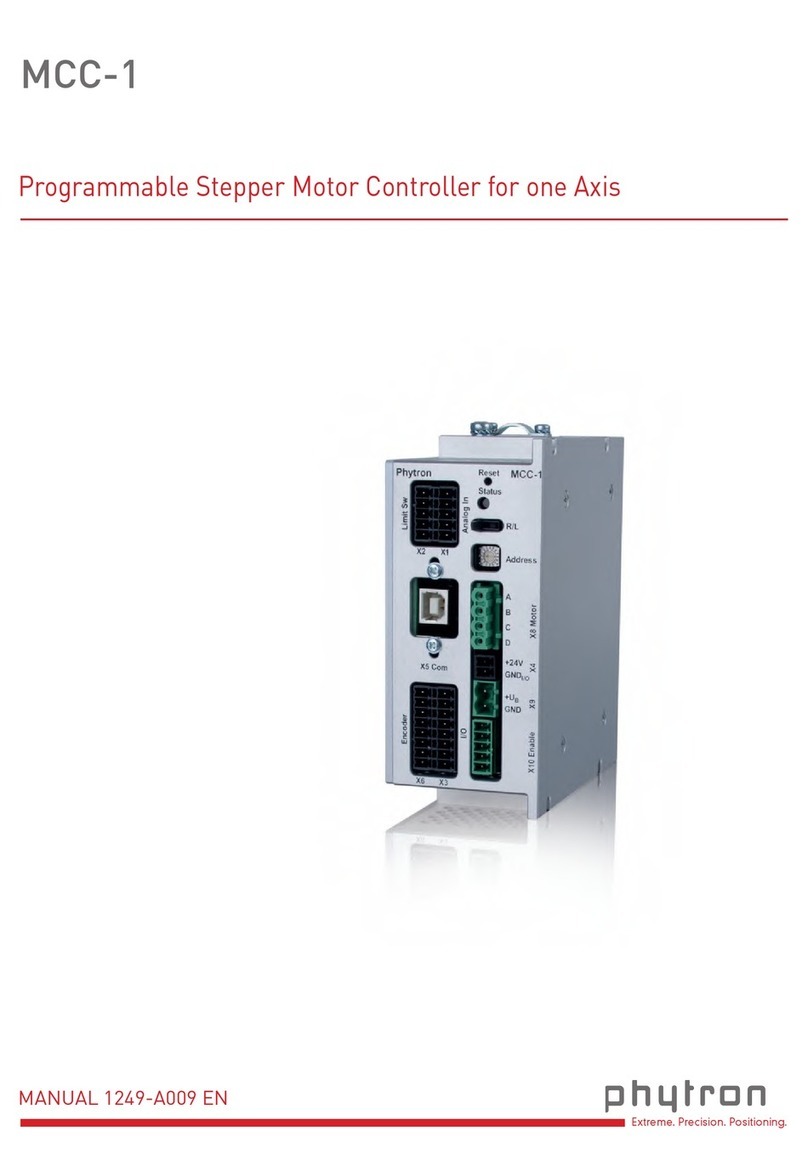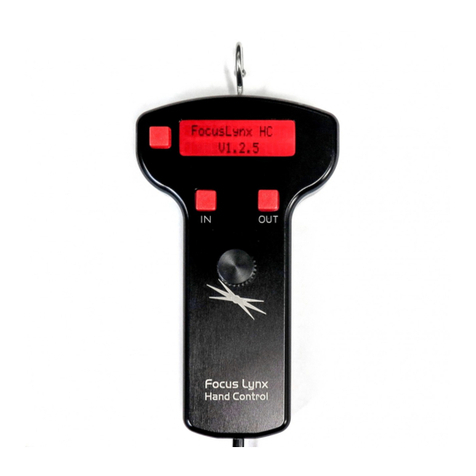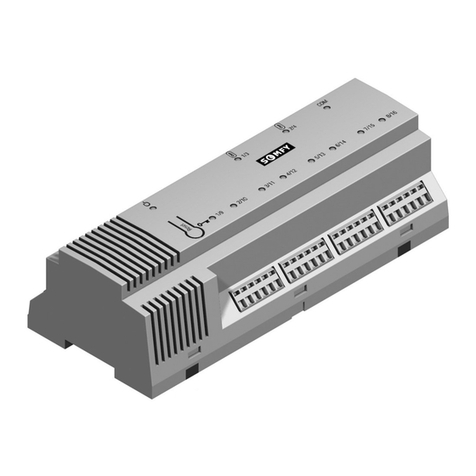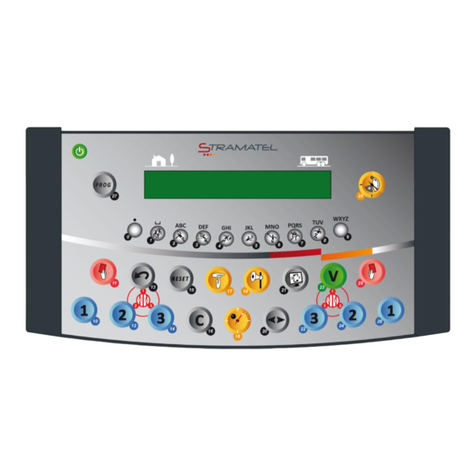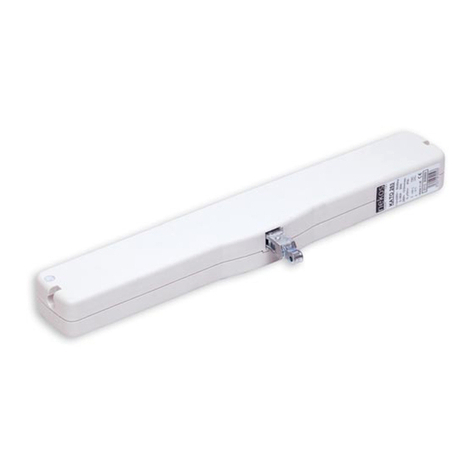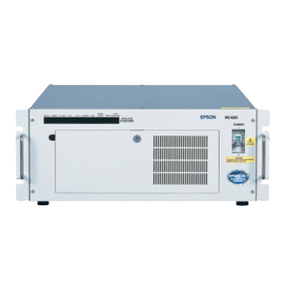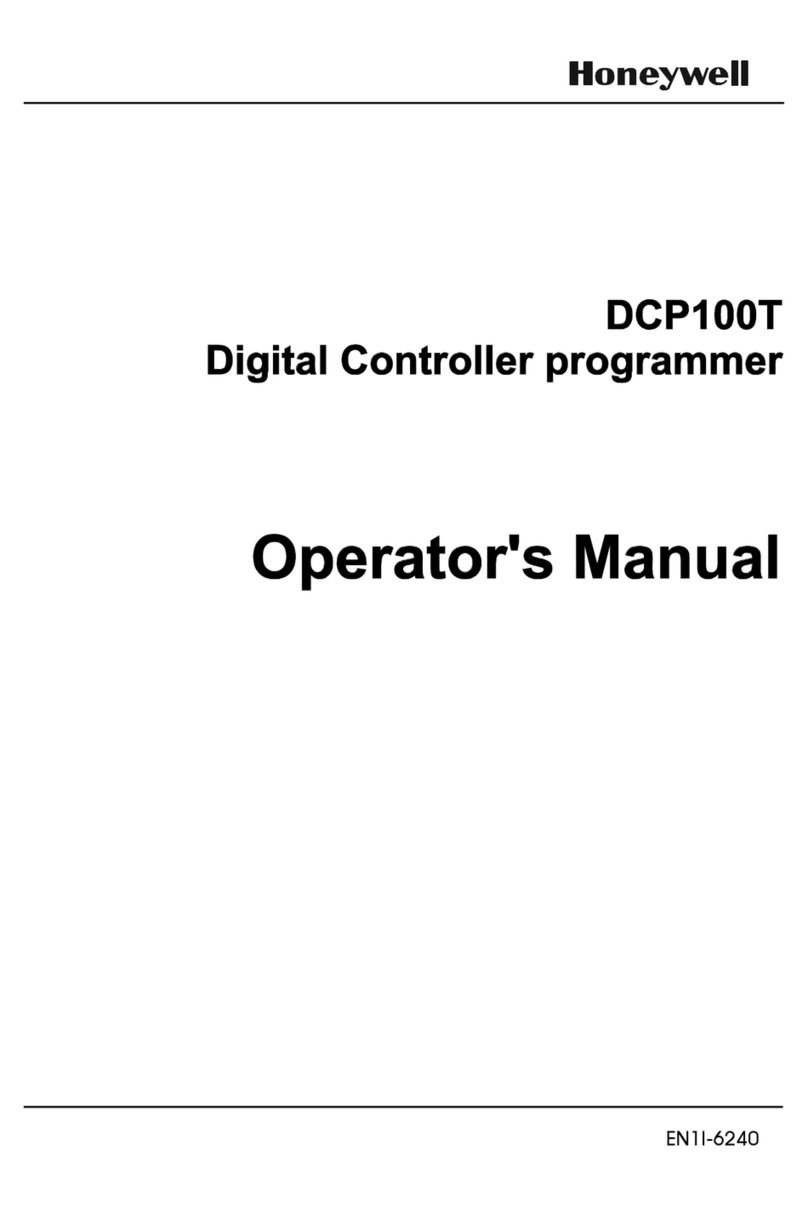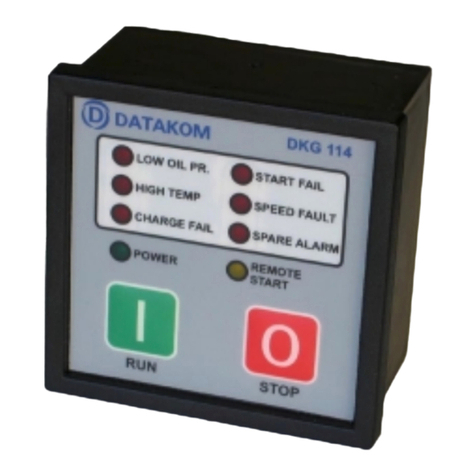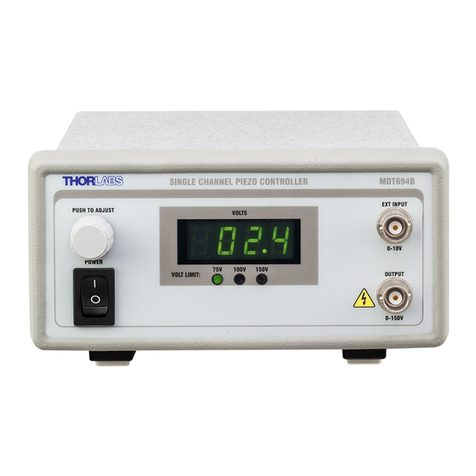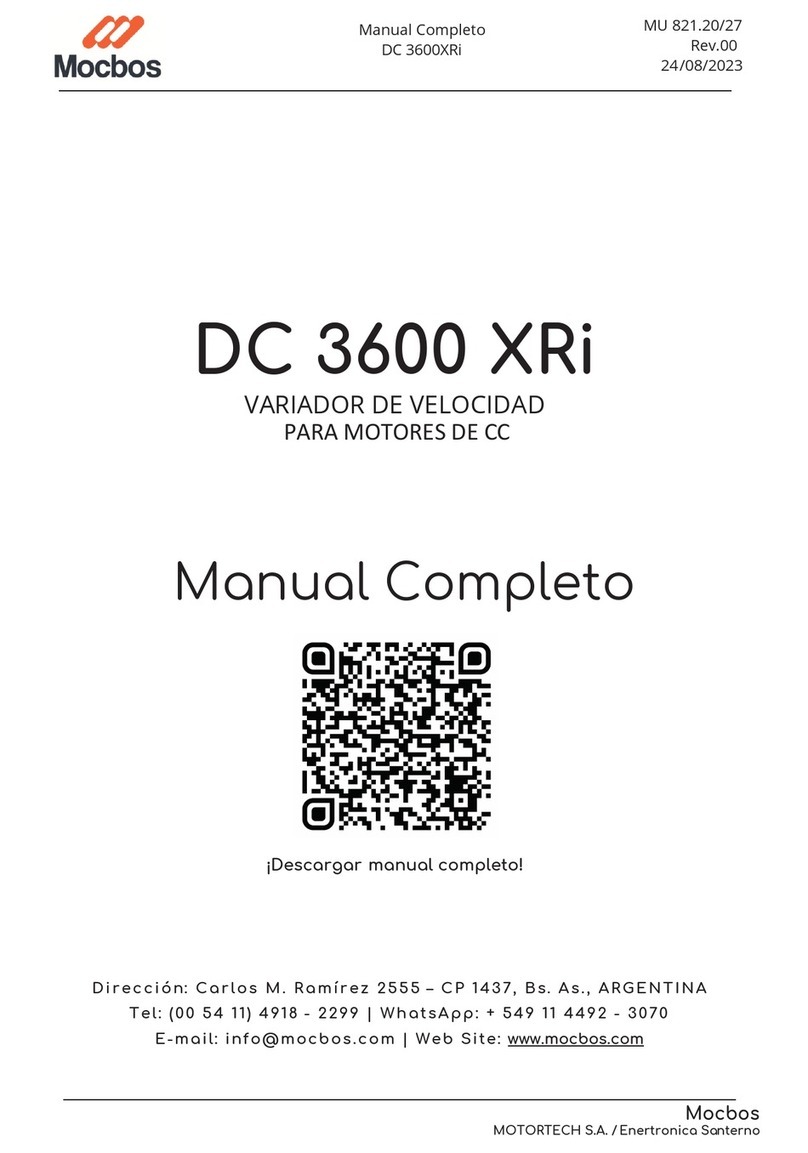CHINT JKF8 Series User manual

Standard: JB/T 9663-2013
NO:2021.01
JKF8 Series
Smart Low-Voltage Reactive
Power Compensation Controller
User Instructions

Safety Warning
1 Only professional technicians are allowed for installation and maintenance.
2 Installation in any damp, condensed-phase environment with inflammable
and explosive gas is forbidden.
3 When the product is being installed or maintained, the power must be
switched off.
4 You are prohibited from touching the conductive part when the product is
operating.

Table 1 Key technical parameters
JKF8 smart low-voltage reactive power automatic compensation controller (hereinafter referred to as
controller) is designed for reactive power compensation in low voltage power distribution systems. By
compounding controlling of physical variables (reactive power and power factor), the product enables
automatic capacitor switching, power factor improvement and line reactive power loss reduction. It is easy
for operation and reliable, with complete functions and strong anti-interference capability. The product
complies with JB/T9663 standard and can correctly display grid power factor under harmonic environment.
Use Purpose
1
Type Key and Definitions
Key Technical Parameters
2
Rated frequency: 60Hz, no this option for default 50Hz
Rated voltage: 220VAC, 240VAC, 380VAC, 440VAC
Output circuit specification: 6, 12
Product design serial number
Control of physical variables: compound
Low-voltage reactive compensation controller
JK F 8 □ □ □
Environm
ental
condition
s
Ambient temp.
(℃) -25℃~+70℃
Hot and humid
atmospheric
conditions
50% relative humidity at +40℃; up to 90% at +20℃;
Altitude ≤2000m, (take ventilation, heat dissipation and anti-condensation measures for
altitude above 2000m)
Pollution
class/installation
category
Free from hazardous gases and vapors, conductive or explosive dusts, and strong
mechanical vibration
Functions
Control strategy Compound control of reactive power and power factor, ensuring reliable
switching under low load and preventing resonance during switching.
Display
code
Non-
polarized current
Self-identifying of current polarity, no direction requirement for IS1 and
IS2 sampling lines.
Undervoltage
protection
Automatically removes capacitor banks in operation level by level (in 5
seconds) when grid voltage is lower than 0.78UN and displays voltage
value.
≡U
Overvoltage
protection
Automatically removes capacitor banks in operation level by level (in 5
seconds) when grid voltage higher than overvoltage threshold and
displays voltage value.
≡U
Undercurrent
protection
Automatically removes capacitor banks in operation level by level (in 5
seconds) and lock-up capacitor adding when the secondary signal of the
current transformer is lower than 150mA.
≡1
JKF8 SeriesSmart Low-Voltage Reactive Power Compensation Controller
01

Functions
Sampling
overcurrent alarm
The overcurrent alarm is triggered when sampling current is bigger than
6.0A.≡0
Discharge
delay protection The switching lock-up time for the same group of capacitors is 3 minutes.
Circular self-
test function Provides circular self-test function for factory testing of capacitor screen.
Safety protection IP30
Installation
method Embedded
Technical
parameter
s
Sampling and
rated voltage 380VAC±20% 440VAC±20% 220VAC±20% 240VAC±20%
Overvoltage
threshold setup 400V~456V 400V~528V 230V~270V 240V~300V
Overvoltage
factory preset 430V 500V 250V 270V
Rated frequency 50Hz±5% or 60Hz±5%
Sampling current 150mA~5A, input impedance≤3mΩ
Undercurrent
lock-up ≤150mA
Current
ratio setup
Current ratio setup range for external sampling current transformer: 5~1200, set ratio
(factory preset 60 means 300/5)
Delay time setup 5~120 seconds (factory preset 30 seconds)
Setup mode
Full automatic mode (display code 1): no need to set adding threshold and removing
threshold.
Manual setup mode(display code 0): adding threshold and removing threshold need
to be set manually.
Adding
threshold setup
Full automatic mode: capacity of the smallest capacitor bank
Manual mode: reactive set value, 1~120kvar(factory preset 10 kvar)
Removing
threshold setup Power factor, 0.85~-0.95 continuously adjustable (factory preset 1.00)
Circuit number
setup JKF8-6 (1~6 circuits available), JKF8-12(1~12 circuits available)
Operating method
Automatic circular switching/manual switching
Maximum power
consumption 15W
Tightening torque Terminal screw torque≤2.5N·m
Output contact
capacity 5A/220V (or 3A/380V)
Weight About 1.5Kg
JKF8 SeriesSmart Low-Voltage Reactive Power Compensation Controller
02

3.1 Main Features, Outline and Installation Dimensions
Figure 1 Outline dimensions of the product
The product is equipped with fire retardant plastic case and digital display. The installation method
of the product is the same as 42L series product. The outline dimensions of the product is 120mm×120
mm×130mm, the installation perforating dimension of the product 113 mm×113mm, the embedding
depth 116 mm.
3.2 Installation Procedure, Method and Product Wiring Diagram
3.2.1 Assembly and fixing of the controller
Figure 2 Product installation and fixing
Table 2 Description of dynamic parameters
Code Definitions Unit Description
I Current AUse approximate value when measured value exceeds display range, for
example: displays E13 for 1260A.
UVoltage VDisplays measured voltage
QReactive
power kvar Use approximate value when measured value exceeds display range, for
example: displays E14 for1360 Kvar
PActive
power kW Use approximate value when measured value exceeds display range, for
example: displays E14 for1360 Kvar
3 Installation
(120±2)mm
(120±2)mm (130±2)mm (109±1)mm
(109±1)mm
SET +-
JKF8 SeriesSmart Low-Voltage Reactive Power Compensation Controller
03

I 1
2
1
I 2
S
S
S
S
U
U
Installation procedure: Embed the controller into the hole on the panel first, then push the mounting
parts into the upper and lower slots on the controller case. Tighten the screws to fix the controller onto
the panel. After installing the upper and lower mounting parts, please make sure the controller is secured,
otherwise it may fall out or be damaged due to vibration during transportation.
3.2.2 Product wiring
Figure 3 Product wiring
① Terminals “US1” and “US2” are connected to sampling voltage. They must be connected to
380VAC or 220VAC based on rated operating voltage.
② Terminals “IS1” and “IS2” are connected to sampling current which comes from total load
current tranformer and set apart from “US1” and “US2”. (Phase A for current, phase B and C
for voltage; phase B for current, phase A and C for voltage; phase C for current, phase A and B for
voltage)
③ Terminal “COM” is the relay common terminal for the output of group 1~12 of the controller.
Terminals “1~12” are used for output control of the contactors of the compensation circuits of
the capacitor display.
④ If the system voltage is 3-phase 380V and the coil voltage of contactor J is 220V, P is connected
to phase N. If the coil voltage of contactor J is 380V时, P is connected to phase C (different from
relay common terminal COM).
⑤ If the system voltage is 3-phase 220V, please select 220V for the coil voltage of contactor J, and P
10
9
8
7
6
5
4
3
2
1
COM
12
11
J 1
JKF8
H
L
5A 1A 1A
J12
FU1F F
UU
23
A
B
C
N
ABCN
PP
Power transformer
Rear View
To load control panel
Total current transformer
Low voltage side
High voltage side
JKF8 SeriesSmart Low-Voltage Reactive Power Compensation Controller
04

Table 3 Parameter setup
Note: When “F-0” is set to “1” (full automatic), “F-1” is set automatically, other parameters can be set manually.
3.3.2.2 See Table 4 for parameter setup and operation instructions
Table 4 Parameter setup and operation instructions
is connected to phase C.
⑥ FU1~3— External fuse provided by user itself. The rated current of fuse core FU1 is 5A, the rated
current of fuse core FU2 and FU3 is 1A.
3.3 Operating Principles, Parameter Setup and Application Requirements
3.3.1 Operating principles
The controller displays “CAL” when it is powered-on, then it will enter auto operating status after
5 seconds. If the input current meets minimum requirement (bigger than 150mA), the controller will
display measured grid power factor COSΦ. In full automatic setup mode, the controller will initiate a
“self-learning process”. During this process, the controller will compare the given “power factor value”
with the current power distribution system and add capacitors automatically to improve power factor.
In the meantime, the controller will record the values of the connected capacitor banks and use the
smallest capacitor bank as the reactive adding threshold.
No matter in automatic or manual parameter setup mode, the controller will compare the measured
inductive reactive power demand with F-1 reactive power threshold Qs. If the inductive reactive power
demand is larger than adding threshold, the lagging indicator will start flashing. After delay, add
capacitors level by level until the grid reactive power demand is lower than reactive power threshold Qs
and the power factor is not bigger than target power factor; when the power factor of the grid exceeds
target power factor, the leading indicator will start flashing, the system will automatically remove
capacitor banks in operation level by level (in 5 seconds).
3.3.2 Parameter setup
3.3.2.1 See Table 3 for parameter setup (menu introductions)
Full automatic
setup mode
In this mode, there is no need for further setup except correct wiring. User just need to setup
F-6 correctly, the system will display true values of total current, reactive power and active
power under full automatic setup mode (F-0 SET 1).
Manual setup
mode
This mode enables professionals to conduct setup according to system conditions. In manual
setup mode, user must set the current transformer ratio correctly when starting the machine
for the first time. For example: if the sampling current transformer ratio is 1000/5A, the
controller ratio should be 200.(F-6 SET 200)
F-0Threshold setup mode 1 or 01—1 for full automatic setup,
0 for manual setup
F-1Adding threshold 1~120 kvar 10 kvar 1Does not display F-1 under
full automatic mode
F-2Target power factor 0.85~-0.95 1.00 0.01
Minus means capactive system
F-3Switching delay 5~120 seconds 30 seconds 1
F-4Overvoltage 400V~456V 430V 2Backflash voltage 8~10V
F-5Number of control
circuits 1~6 or 1~12 6 or 12 1Two specifications
F-6Current sampling
tranformer ratio 5~1200 60 5(300 : 5)
Code Name Setup range Factor y settings Increment Remarks
05
JKF8 SeriesSmart Low-Voltage Reactive Power Compensation Controller

Under auto mode press + to show dynamic parameter code:
I (current)、U(voltage)、Q(reactive power)
then press - to show the value , press SET to return to the
main display value: power factor .
、P(active power) ,
Under manual mode press + to
connect a group of capacitors ,
press - to disconnect a group
of capacitors .
Note: if F-0 is set as 1 , it will be
switched to full automation on mode.
auto light starts to flash , and no
need to change other settings , it is
under fool-proof mode.
Afer 5s , it is
automat ivally-
switched to Press SET key
Press and hold SET key for 3 s
Auto mode,indicator light
on and display system
power factor value
Turn on power
Display CAL
Manual mode, indicator light
on and display system
power factor value
Press and hold SET key for 3 s
Setup mode , setup light
on , display F-□
(see menu instructions)
Under setup mode press SET to show
set value , press + or - to incease
or decrease the value .
Once set it must be switched to
auto mode to save the change .
under setup mode , no key pressed
in 40 s , it′ll auto switch to auto mode
3.3.2.3 Parameter setup operation
Reactive power
threshold setup
The setup of F-1 is available in manual setup mode. If the set Qs is too small, the system will
switch capacitors frequently (cause oscillation); if the set Qs is too large, the compensation
effect will be affected. Therefore, the minimum set Qs should not be smaller than the
minimum capacitor capacity. For example: If the equipment has a capacitor bank of 8 circuits,
the value of each circuit is 15, 20, 30, 30, 30, 30, 30, 30, then the set Qs value should be
minimum capacity of 15 kilovar. (F-1 SET 15)
Manual
switching
In automatic mode, press and hold “SET menu” key for 3 seconds to enter manual mode.
Press “+(adjustment display)” key to add one group of capacitor bank, press “-
(parameter display)” key to remove one group of capacitor bank.
Circular
self-testing
In automatic mode, press and hold “SET menu” key for 10 seconds until the decimal point
starts flashing. Release the key to enter circular self-testing mode.
Remember to disconnect the capacitor before conducting self-testing.
Change set
parameters
In manual mode, press and hold “SET menu” key for 3 seconds to enter parameter setup
menu, then press “SET menu” key continuously until you select the parameter that needs
to be changed. Press “+(adjustment display)” key or press “-(parameter display)” key
to increase or decrease the parameter value. After you finished alteration, press and hold
“SET menu” key for 3 seconds to exit setup menu and enter automatic mode.
After you finished alteration, you must enter automatic mode to save and confirm the
alteration. In setup mode, the system will enter automatic mode automatically if no key is
pressed within 40 seconds.
Dynamic
parameter
adjustment
display
In automatic mode, press “+(adjustment display)” key to show dynamic parameter display
code: I (current), U (voltage), Q (reactive power), P (active power), then press “-(parameter
display)” key to show the corresponding display value of the dynamic parameter. Press
“SET (menu)” key to returen to main display value: power factor COSΦ.
06
JKF8 SeriesSmart Low-Voltage Reactive Power Compensation Controller

4.1.1 User should check the operating status of the controller on a regular basis. Normally, the displayed
power factor of the controller should not be larger than 0.92 and should be relatively stable.
When the sampling current is smaller than 200mA or the controller displays undercurrent alarm, it
will be difficult to determine whether the controller is under normal operation, because the power factor
can either be positive or negative and the display status can either be leading or lagging, therefore user
should conduct motor load commissioning.
4.1.2 The power factor value will decrease as user increases the motor load, and the controller will display
lagging. As the capacitors are being added automatically, the power factor will increase gradually and the
total current of the cabinet will decrease. User should record the power factor and total cabinet current in
real time.
4.1.3 Use the universal change-over switch on the controller or the cabinet to remove the capacitor banks
in operation manually before disconnecting the power supply of the cabinet.
4.1.4 Short circuit the secondary side of the sampling current transformer before removing or replacing
the JKF8 controller to prevent open circuit of the current transformer. Remove the short circuit line after
reinstalling the controller.
4.2 Analysis and troubleshooting of faults
3.3.3 Preparation and inspection before use
1) Before using the capacitor, user should check if the model on the nameplate is consistent with
that of the product. User should also check if the included accessories are complete.
2) Identify the sampling phase sequence of the controller correctly: Turn the multimeter to AC
voltage position. Press one probe on the busbar of the series sampling transformer in the cabinet,
use the other probe to test if the voltage between the transformer and the US1 or US2 terminal
of JKF8 controller is UN (rated operating voltage). If yes, the sampling phase sequence is correct.
3) Check if all the parameters of the controller are set correctly according to “Parameter setup”. If
“F-0” is set to “1”, user just need to check if “F-5” and “F-6” are set correctly.
4 Maintenance
4.1 Daily maintenance
JKF8 SeriesSmart Low-Voltage Reactive Power Compensation Controller
07

Table 5 Analysis and troubleshooting of faults
No.Faults Cause analysis Solutions
1
Load equipment is
turned on, but the
controller still
displays
undercurrent “≡1”
1. The sampling current is smaller than
150mA or the secondary circuit of the
current transformer is open;
2. Fault exists in the current transformer
or the controller.
1. Check if the secondary circuit of the
sampling current transformer is open;
2. If the measured IS1 and IS2 sampling
currents are bigger than 200mA,
replace the controller.
2
Sometimes the
controller
displays“≡0”
Current transformer sampling current is
bigger than 6.0A, which means the
selected sampling current transformer
ratio is too small.
Select CT based on the primary current
of current transformer is larger than
load current.
3
Controller always
displays “≡U”
or voltage value
1. Undervoltage or overvoltage alarm,
display this code;
2. Product fault
Test voltage before increasing set
overvoltage threshold. If the increase
is invalid, replace the product.
4
The displayed
power factor keeps
changing, or the
leading and
lagging indicator
keep switching.
1. Load is relatively low and sampling
current is smaller than 200mA;
2. Caused by frequent load change,
such as electric welding machine,
spot-welder, rolling mill, pressing machine,
hauling equipment;
3. Electrical load is not stable; transformer
load rate is relatively low.
1. Turn on motor load and obser ve the
display of the controller;
2. Select dynamic reactive power
compensation equipment for fast
changing load;3. Select controller
that uses non-isometric optimal
switching, such as NWK1-GR liquid
cr ystal controller.
5
Af ter adding
capacitors, the
power factor
remains almost
the same.
The installation position of the current
transformer is wrong; the primary current
is not included in the cabinet.
Take total current: sampling current
=load current + capacitor current,
which means the primar y line of the
cabinet is connected after the
sampling transformer.
6
No matter what
load, the controller
always displays
leading, the power
factor is negative,
and the system
does not operate
automatically.
1. Wrong sampling phase sequence, such
as phase A for current, and phase AB for
voltage;
2. There is equipment such as frequency
converter or rectifier installed at load
end, which causes harmonic interference.
1. Determine sampling phase
sequence according to 7.3.4;
2. Select NWK1-GR liquid crystal
controller with stronger anti-
harmonic interference capability.
7
Capacitor
switching is too
frequent
1. Fast change of load current, the set
delay time is shorter than 10s;
2. The set target power factor is too low;
3. The set reactive power threshold is
too low.
1. The set delay time is longer than
30s;
2. Increase target power factor ;
3. Increase reactive power threshold
properly.
8
The displayed
power factor is
lower than 0.90,
but no capacitor
is added
automatically.
1. Load is relatively low, the required
reactive power Qs is smaller than set
value of F-1 reactive power threshold;
2. The set transformer ratio is too small.
1. Recommend to replace with 2
groups of capacitors with smaller
capacity;
2. Set transformer ratio correctly;
9
The controller
displays garbage
characters or the
controller is
crashed.
1. Abnormalities such as lightning strike;
2. Electromagnetic interference。
Disconnect the power and restart the
machine. If the problem occurs
repeatedly, replace the product.
JKF8 SeriesSmart Low-Voltage Reactive Power Compensation Controller
08

In order to protect the environment, the product or product parts should be disposed of according
to the industrial waste treatment process, or be sent to the recycling station for assortment, dismantling
and recycling according to local regulations.
5 Environmental Protection
09
JKF8 SeriesSmart Low-Voltage Reactive Power Compensation Controller

JKF8 SeriesSmart Low-Voltage Reactive Power Compensation Controller
DR/J03
JKF8 Series
Smart Low-Voltage Reactive
Power Compensation Controller
JB/T 9663-2013
10

JKF8 SeriesSmart Low-Voltage Reactive Power Compensation Controller
11

JKF8 Series
Smart Low-Voltage Reactive
Power Compensation Controller
User Instructions
Table of contents
Other CHINT Controllers manuals
Popular Controllers manuals by other brands
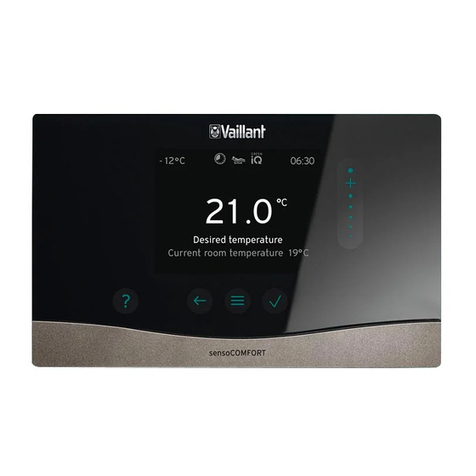
Vaillant
Vaillant sensoCOMFORT VRC 720f Operating and installation instructions
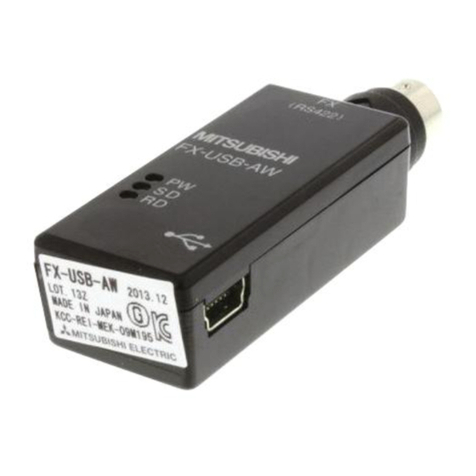
Mitsubishi Electric
Mitsubishi Electric MELSEC-F FX-USB-AW user manual

Neptronic
Neptronic BT100S Specification & installation instructions

Smartrise
Smartrise C4 user manual

vacuubrand
vacuubrand VACUU-SELECT Instructions for use
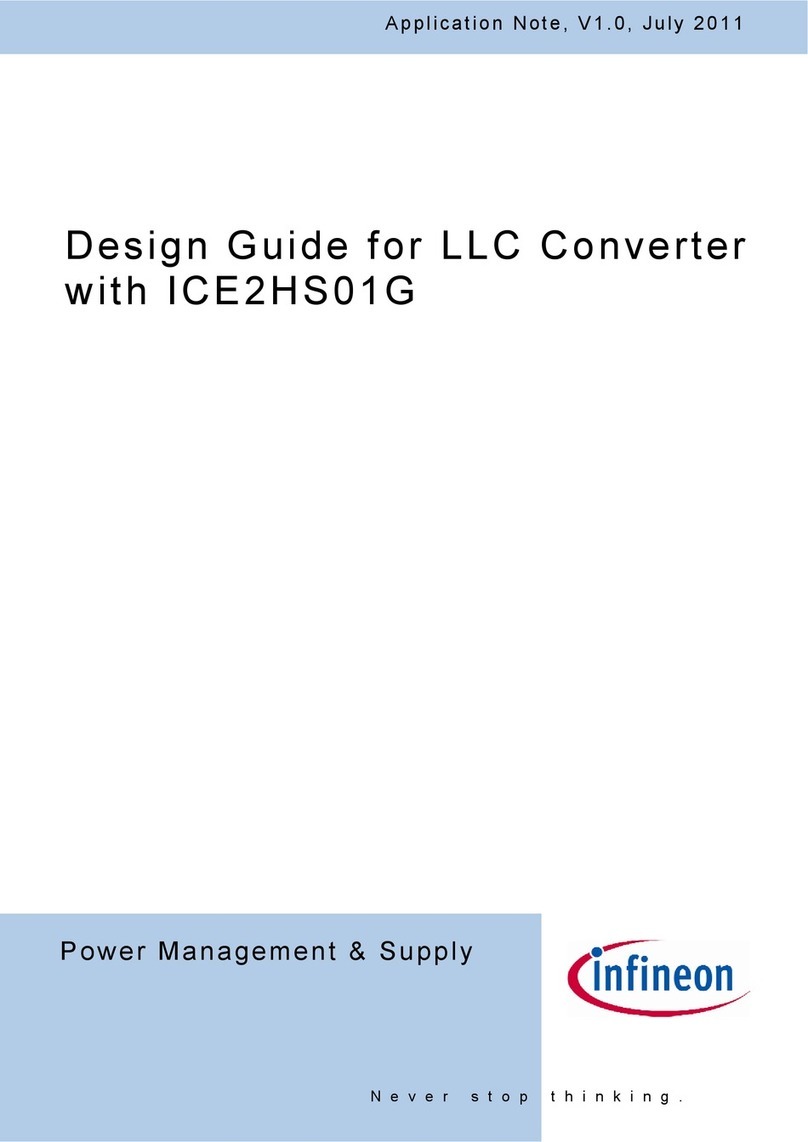
Infineon
Infineon ICE2HS01G Application note
